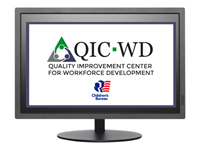Child Welfare Quality Improvement Center for Workforce Development (QIC-WD)
Date of this Version
1-2022
Document Type
Article
Abstract
Through a series of steps and causal links, a theory of change provides a roadmap to address the root causes of an identified workforce problem and describes how and why changes are expected to lead to the desired outcomes. In Milwaukee, the theory of change was driven by the results of the Organizational Social Context (OSC) Measure administered during the needs assessment process. More specifically, the OSC showed that there were several aspects of both culture and climate that were in need of improvement, including 1) a hierarchical and rigid decision-making structure, 2) high role conflict and change resistance within the organization, and 3) low sense of personal accomplishment and cooperation among staff.
Root cause analysis discussions were held with workers and with the implementation team, to explore potential causes of and solutions for these issues, which are summarized as three key changes needed:
- worker involvement in identifying, understanding, and solving agency problems that are stressful to staff and/or compromise effective service,
- supervisors and leaders understanding the importance of positive and constructive feedback and taking action to recognize workers' successes and accomplishments and
- collaborative analysis and problem solving around issues that contribute to perceptions of unfairness or antagonism among coworkers.
With those three conditions in place, it was reasoned that decision making would be less centralized, having been distributed to workers instead of just residing with upper management; workers would experience less role conflict, by virtue of being involved in efforts to address the conditions that create conflict; and workers would be less resistant to change, because they participated in the decision process to make changes. In addition, more positive and constructive feedback would lead to improved feelings of personal accomplishment among workers. Finally, collaboration would lead to an improved sense of cooperation and trust among coworkers. These changes would constitute an improved organizational culture and climate. This would lead to greater job satisfaction, performance, and commitment among employees, which would translate into increased continuity of effective case practice. Finally, these changes were thought to extend to improvements for children, youth, and families.
The following image depicts the theory of change beginning with a problem statement followed by a series of steps that lay out the logic on how that problem will be addressed.
Included in
Industrial and Organizational Psychology Commons, Performance Management Commons, Public Policy Commons, Social Welfare Commons, Social Work Commons, Training and Development Commons


